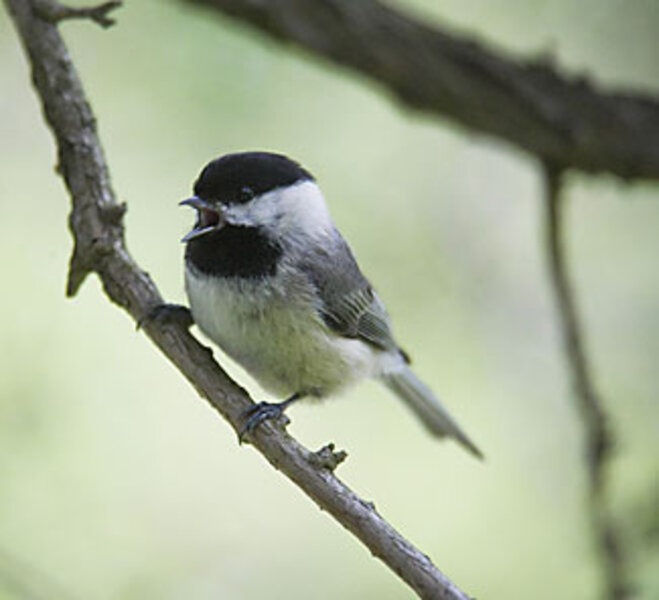A long-vacant house gains new tenants
Loading...
Last week, the chickadees came. Long after my first and only intimate encounter with a pair, there they were, as if the intervening decades had been compressed into days. Here were the shrill little calls, the back and forth of immediate responses. And here I was, privileged on my very first day of discovery to have stepped into a critical moment in a ritual of courtship.
But let me backtrack and explain the history of the artifact that possibly speeded things along, a birdhouse, which throughout decades hosted but a single family. It was the departure of this family – deduced from the scattered feathers, the prematurely empty nest, and the former glimpses of the neighbor's cat – that impelled me to remove the little house, and along with it, the possibility of future cycles of beauty ending in such sadness.
When the years eventually reconfigured the growth on my fence top, denying possible access to feline intruders, I rehung the birdhouse on the fence – where it stood for many years as mere decoration. Until last week, that is, when I stumbled into the middle of an essential moment. For here were the little intermittent calls from the Australian tea tree, perhaps three feet from the fence-mounted house. Here was a small chestnut-backed chickadee flitting to a twig encircling the house. Squeezing itself into a barely accommodating hole, it was a whirl of beauty, appearing simultaneously hardy and delicate.
How much activity, how much flitting and scouting and vocalizing I must have missed while preoccupied indoors the previous week. For the subsequent actions revealed a deliberate choice of nest, signalled by the insistent pecking sound emanating from within, amplified by hollowness. (A woodpecker, I would have guessed, had I not known better.) Responding with a sudden zoom of wings and a swift landing was the male, still some feet away, answering in shrill four- and five-note calls, moving in place with tiny pirouettes.
Flitting the small distance to the nest hole and pecking on the wood, which had been pecked moments ago from within, he, too, squeezed in – only to backtrack quickly, followed by the female chickadee.
It is, of course, in retrospect that I identify each bird by sex. For just as the second one to emerge stood motionless on the nest-entwining twig, the first hopped onto his lady's back. Then each was airborne, tied together by bursts of intermittent calls in flight. I, too, flew. Upstairs, my son, home for the first part of spring break, was just emerging from a late-morning sleep (inadequate catch-up time for an entire semester).
"We have new tenants," I bubbled. "Care to guess who?" I brought him to the window, pointed to the birdhouse, and recapitulated the story of the first chickadee pair, resident prior to his birth.
"Yes, I remember your once mentioning it," said my son, who has a tendency to shed all but the most important baggage from memory.
For the next few days, I continue to thrill to the comings and goings of the chickadees. Nature is priming them for new life. Daily they deepen their bond, flitting back and forth from the birdhouse, which is now their focal point.
My son, gathering his camping gear together, leaves our home and joins friends for the latter half of spring break.
As my own nestling leaves (yet again), I will remain absorbed in the cycle of life unfolding in my garden. And I will wonder how each spring we are privileged to observe the turbulence of energy directed toward new life, and the beauty of the pairings which perpetuate it.





